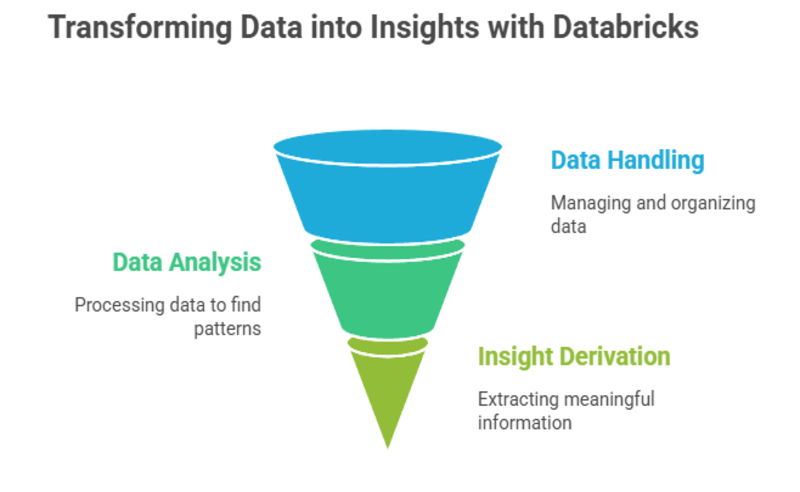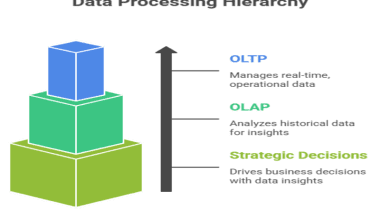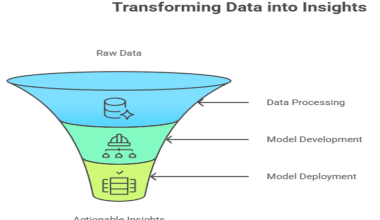Summary: Databricks is a cloud-based unified analytics platform that combines data engineering, science, and AI in one collaborative workspace. Built on Apache Spark, it enables scalable, reliable data processing and machine learning, powering modern data lakehouses and real-time analytics to help organizations innovate faster and simplify complex workflows.
Introduction
In today’s data-driven world, organizations are constantly seeking efficient ways to handle, analyze, and derive insights from massive datasets. Enter Databricks, a revolutionary platform that has transformed how enterprises approach big data and artificial intelligence (AI).
But what exactly is Databricks, and why is it becoming a cornerstone in modern data analytics? This blog offers an expert deep dive into what is Databricks, its platform features, and why it matters for businesses aiming to leverage unified data analytics for future-ready operations.
Key Takeaways
- Databricks unifies data engineering, science, and analytics on one cloud-native platform.
- Built on Apache Spark, it delivers fast and scalable big data processing.
- Delta Lake ensures reliable, ACID-compliant data storage across batch and streaming workloads.
- MLflow manages the end-to-end machine learning lifecycle from experimentation to deployment.
- Collaborate efficiently using multi-language interactive notebooks supporting real-time data workflows.
What is Databricks and Why Do We Need It?
Databricks is a unified analytics platform built on top of Apache Spark, providing an integrated workspace where data engineers, data scientists, and business analysts can collaborate seamlessly. It simplifies complex workflows involving large-scale data processing, machine learning, and analytics within a single environment.
The necessity of Databricks arises from the challenges organizations face with scattered data ecosystems, slow and fragmented processing pipelines, and a lack of scalability. Traditional data platforms often force teams to juggle multiple tools, leading to inefficiencies, data silos, and slower decision-making. Databricks addresses these pain points by:
- Combining data engineering, data science, and machine learning on a single unified platform
- Offering scalable, cloud-native infrastructure that adapts to workload demands
- Enhancing collaboration through interactive notebooks and shared workspaces supporting Python, SQL, R, and Scala
- Ensuring reliability and consistency with Delta Lake technology, enabling ACID-compliant storage for both batch and streaming data.
As data volumes explode—IDC predicts the global datasphere will grow to 175 zettabytes by 2025—the demand for platforms like Databricks that can reliably scale and integrate advanced AI workflows becomes paramount.
How to Use Databricks?
Databricks provides a cloud-based environment where users can unleash the power of Apache Spark integration without the complexity of managing infrastructure. Here’s how it works at a high level:
Data Ingestion & Storage
Leveraging capabilities like Auto Loader, Databricks easily ingests data from various sources like cloud object storage or data lakes into its data lakehouse architecture—a combination of data lakes and data warehouses for flexible storage and query performance.
Data Engineering Tools
Databricks simplifies the creation of scalable data pipelines using SQL, Python, or Scala. Data engineers orchestrate complex ETL (Extract, Transform, Load) workflows using tools such as Delta Live Tables, which automate pipeline management and data quality enforcement.
Unified Data Analytics Workspace
Data teams operate within shared interactive notebooks that enable code collaboration, data visualization, and real-time analytics. This environment supports multi-language development and integrates with BI tools like Power BI and Tableau for dashboarding.
Machine Learning Workflow
The platform incorporates MLflow, an open-source framework to track experiments, manage model versions, and streamline deployment. It also integrates advanced AI libraries (e.g., Hugging Face Transformers) to accelerate the development of custom machine learning and generative AI models.
Real-Time and Batch Processing
With Apache Spark’s distributed computing power, Databricks handles both batch analytics and real-time streaming, meeting diverse business needs from historical reporting to instantaneous decision-making.
In brief, using Databricks means you leverage a well-integrated ecosystem of data engineering, machine learning, and analytics tools that accelerate the delivery of actionable insights while abstracting infrastructure complexity.
Key Features of Databricks Platform
The key features of the Databricks platform illustrate why it has become a leading unified analytics solution built on Apache Spark. These features focus on scalability, ease of use, collaboration, and the integration of advanced data engineering and machine learning tools:
Optimized Apache Spark Integration
It provides a highly optimized Apache Spark environment. It extends Spark’s capabilities with the Databricks Runtime, which includes proprietary performance improvements like the Photon execution engine that vectorizes queries, speeding up SQL and DataFrame operations. This results in faster and more efficient distributed data processing for both batch and streaming workloads.
Unified Analytics Workspace
It offers interactive, multi-language notebooks (Python, Scala, R, SQL) that facilitate collaboration among data engineers, data scientists, and analysts in a shared environment. This collaborative workspace encourages teamwork and accelerates the data-to-insight cycle.
Delta Lake for Reliable Data Storage
The platform includes Delta Lake, an open-source storage layer that brings ACID transactions, scalable metadata handling, and schema enforcement to data lakes. This ensures data reliability and consistency across batch and streaming workloads, enabling the creation of robust data pipelines.
Serverless Compute & Auto-Scaling
Databricks Serverless simplifies cluster management by automatically provisioning and scaling resources based on workload demands. This reduces the operational burden on teams while optimizing performance and cost-efficiency.
Machine Learning Lifecycle Management with MLflow
Databricks integrates MLflow, an open-source platform to track experiments, manage model versions, and automate the deployment of machine learning models. This helps data science teams operationalize ML workflows seamlessly within the platform
Where is Databricks Used? Real-World Industry Applications
Databricks is a versatile unified data analytics platform that has found adoption across a wide range of industries. Enabling organizations to unlock the power of their data through advanced AI, machine learning, and real-time analytics.
Its ability to unify data engineering, data science, and business analytics workflows within a scalable and collaborative cloud environment makes it invaluable in many sectors.
Here’s an overview of key industries actively using Databricks and how it is transforming their operations:
Financial Services
Databricks is widely used in the financial sector for real-time fraud detection, risk management, and personalized banking solutions. Financial institutions leverage their machine learning capabilities to analyze massive transactional data streams, detect fraudulent patterns proactively, and assess market risks accurately. Additionally, regulatory compliance reporting and customer analytics benefit from Databricks’ scalable and secure environment.
Healthcare and Life Sciences
Healthcare organizations employ Databricks to integrate and analyze vast datasets, including electronic health records, genomics, and IoT device data. Use cases include predictive analytics for patient care, accelerating clinical research and drug discovery, and improving hospital operational efficiencies.
Databricks enables personalized medicine by bringing together heterogeneous data sources, helping providers deliver targeted treatments and optimize resources.
Retail and E-commerce
Retailers utilize Databricks to enhance customer personalization, optimize inventory management, and improve pricing strategies. By analyzing customer behavior, sales trends, and supply chain information in near real-time, businesses can predict demand, tailor marketing, and streamline stock levels, resulting in increased customer engagement and revenue growth.
Manufacturing
Databricks is essential in manufacturing for predictive maintenance, quality control, and supply chain optimization. By processing sensor and IoT data from machinery, manufacturers can predict equipment failures before they occur, reduce downtime, and improve production quality. Data-driven insights help streamline inventory and logistics, enabling agile operations.
Media and Entertainment
Media companies use Databricks to analyze audience data, optimize content delivery, and target advertisements effectively. Machine learning models help improve viewer retention and advertising revenue by understanding user preferences and engagement patterns.
Supply Chain and Logistics
Databricks supports real-time analytics and AI-driven forecasting to enhance resilience in supply chains. Businesses use it for inventory management, risk mitigation, and anomaly detection, helping them respond swiftly to disruptions, optimize stock levels, and reduce operational costs.
Frequently Asked Questions
What is Databricks used for?
Databricks is used for building end-to-end data pipelines, unifying data storage in data lakehouses, accelerating machine learning workflows, conducting real-time analytics, and creating collaborative data science environments.
What is Azure Databricks?
Azure Databricks is a Microsoft Azure-based deployment of Databricks, combining the power of Databricks with Azure cloud infrastructure. It integrates natively with Azure services like Azure Data Lake Storage and Azure Synapse Analytics, providing a scalable and secure platform for analytics and AI on the Azure cloud.
What is Databricks SQL?
Databricks SQL is a feature of the Databricks platform that enables users to run SQL queries directly on data lakehouse tables, supporting data exploration, reporting, and dashboard creation. It allows analysts to perform fast, interactive queries without managing infrastructure or complex ETL processes.
Conclusion
Databricks has emerged as a pioneering solution that transforms how organizations process big data, develop machine learning models, and facilitate data collaboration all under one unified roof. Built on the legendary Apache Spark engine and enriched with native tools like Delta Lake and MLflow, it stands out for its scalability, reliability, and integration with leading cloud platforms.
For businesses and data professionals aiming to master unified data analytics and gain a competitive edge, Databricks offers an unparalleled blend of power and ease of use. Whether you are starting with data engineering or scaling AI workflows, adopting Databricks can expedite innovation and make your organization’s data truly actionable.
If you want to unlock the full potential of Databricks, consider investing in specialized courses or expert consulting services that provide hands-on training on the platform’s core functionalities, such as data engineering tools, machine learning workflows, and cloud deployment strategies. This will empower you to harness the platform fully and drive measurable business outcomes.
The future belongs to organizations that make intelligent data-driven decisions quickly—and Databricks is the platform that enables that future.




